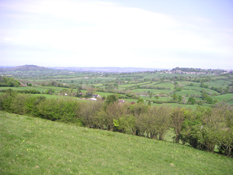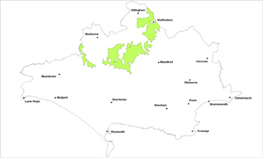Test Alert
British Summer is started !
British Summer is started !


The Rolling Vales landscape type is found around the fringes of the Clay Vale landscape type in north Dorset.
The Rolling Vales landscape type is an undulating transitional area between the low-lying vales and the high chalk, with the clay and greens and landform becoming gradually more enclosed, folded and twisted nearer the escarpment to form a series of rolling foothills. There is an abrupt level change between this area and the steep sides of the escarpment but towards the vales the land flattens out gradually. It subdivides the vale landscape in the northern part of the area. It has a varied and irregular pattern of small pastures, woodland, individual trees and dense hedgerows with the chalk escarpment being a prominent backdrop. It is more undulating and rolling than the vale landscapes. Duncliffe Wood and Pen Hill are both distinctive elevated ‘outliers’ of upper greens in this otherwise rolling landscape. There are often open views across the vales to the north where the hedgerow oaks are more a more distinctive feature than in this landscape partly due to the more open landscape of the vales. The twisting and hedge lined lanes have narrow verges often with high hedge banks. The smaller settlements like Fontwell Magna, Child Okeford and Shillingstone are typically concentrated along the spring lines at the foot of the escarpment with others such as Hazelbury Bryan and Okeford Fitzpaine on more elevated slopes. It is mainly a pastoral landscape with a few arable fields on flatter land interspersed between improved pasture and meadows. There are many small brooks, streams and damp flushes with numerous scattered hamlets and farms. The whole area has a tranquil, secluded and undeveloped character and feel to it. Parts of the settlement edges of both Motcombe and Hazelbury Bryan and the Young Offenders Institute at Guys Marsh all detract from local landscape character. The following are all key features of interest; Kingswood and Piddles Wood are both prominent areas of ancient woodland and Handford Park Estate and Child Okeford Manor are both planned country estates.
The overall management objective for the Rolling Vales Landscape Type should be to conserve and enhance the diverse pattern of trees, woodland, hedgerow and small-scale fields, watercourses and narrow lanes. The conservation of the rural and tranquil nature of the area is also a key objective.
